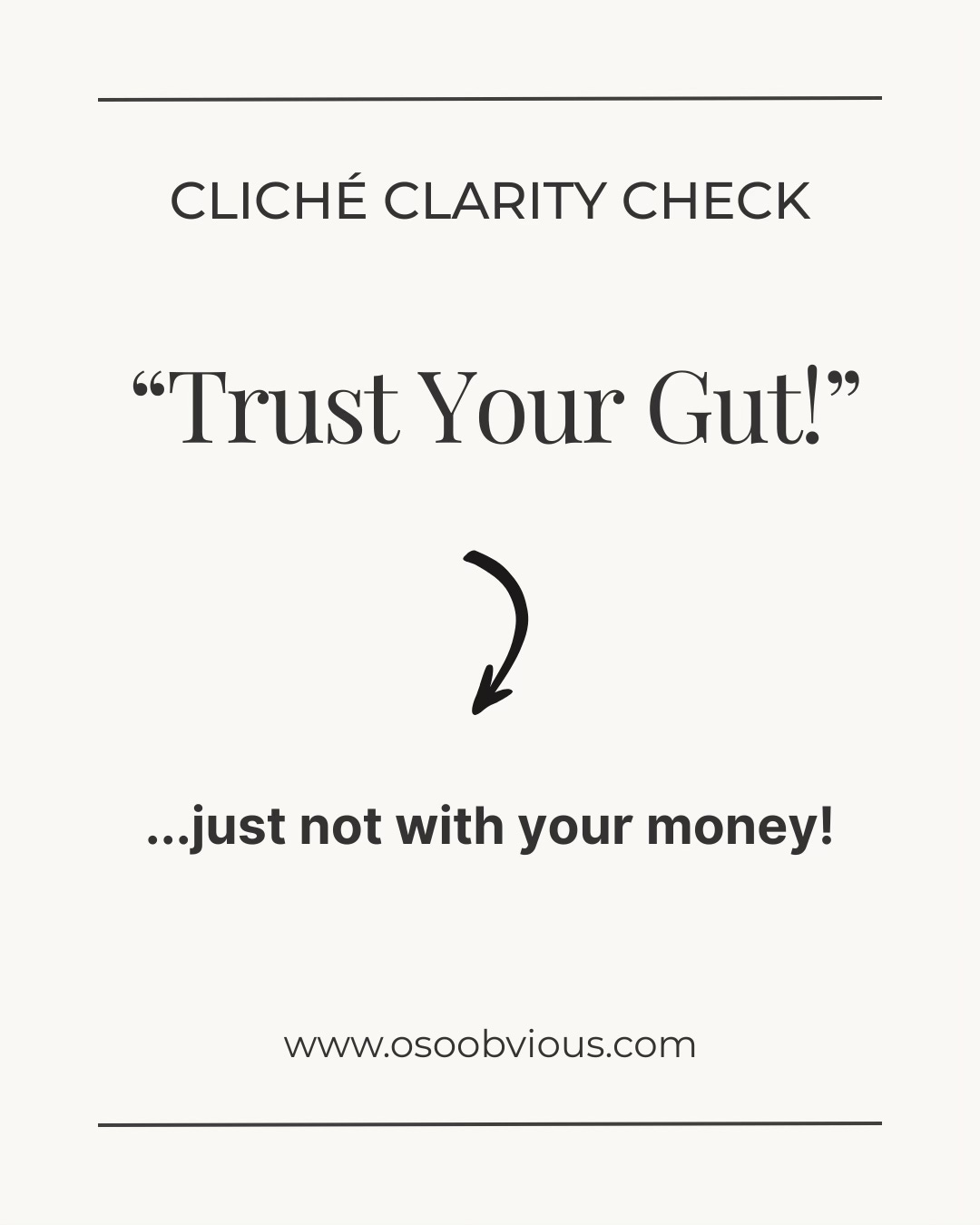Your Gut is Clueless
Why You Should Use Research to Override Your Instincts
Housekeeping: Today’s article includes bonus content for paid subscribers. Upgrade to benefit from additional insights and bonus content.
📌 The Quick Hit
Your gut might help you dodge bad sushi, but it’s terrible at managing your portfolio.
Investors often mistake emotion for intuition; and, that’s where the trouble begins.
Instead of trusting your gut, trust your process.
While the gut–brain connection influences mood and decision-making, it has no idea what markets will do next.
The fix? Replace impulse with insight. Build a question-driven process that keeps your emotions in check and your capital intact.
🧬 Your Gut May Be Smart… Just Not About Money
Neuroscience tells us that the gut/brain axis are in constant dialogue - a two-way highway shaping emotions, energy, and even creativity.
(Huberman and others have shown this beautifully: the microbiome can literally affect attention, focus, and mood.)
But that “gut sense” goes dark the moment you open a trading app.
“Your gut is like that overconfident friend who’s sometimes right for all the wrong reasons and completely convinced they’re a genius.”
When it comes to investing, the gut doesn’t know. It feels.
And those feelings? They’ll cost you.
🤔 Why Do We Still Trust It?
Because thinking about money is hard. And uncertainty? Even harder.
When we don’t know, we feel. And feelings feel certain, even when they’re nonsense.
Why investors keep falling for it:
✅ Foreign stuff is hard. Complexity invites shortcuts.
✅ Feelings rule the moment. “I feel good about this” sounds like logic.
✅ Instant reactions feel like truth. Impulse wins over patience.
✅ Reinforcement bias. One lucky call makes us think we’ve got “a knack.”
The result: investing turns into a slow-motion casino.
Because here’s the truth no one likes to say out loud:
No one - not you, not your gut, not CNBC - knows what’s going to happen next.
🪞The Gut Never Gets Fired
If your gut tells you to buy a stock and it tanks, do you fire it?
Do you ghost your gut? Of course not. You just move on and pretend it didn’t happen.
But when a friend’s “hot tip” goes south, we’re quick to cut them off.
That’s the double standard:
Your gut gets infinite second chances. Advisors don’t.
When your gut’s wrong, it disappears. When it’s right, it takes a victory lap.
That’s how we end up in a feedback loop that teaches nothing and reinforces everything.
🧩 So, What Do You Do Instead?
You make a choice:
Who’s running your portfolio - your brain or your gut?
Start with a simple rule:
Question everything, especially your beliefs about money.
Because your beliefs (not your instincts) shape your investing behavior.
🔍 Research Is the Antidote
Every decision deserves at least a trace of research.
Research = learning stuff. Actual understanding.
Research ≠ Headlines, Hot tips.
Because by the time you read the “news,” it’s already priced in.
If you see that “XYZ Corp just landed a massive deal,” the market knew that yesterday.
But you can still turn curiosity into an edge - by learning how to ask the right questions.
📘 The Investor Research Checklist
A practical guide for asking smarter questions - before you invest.
1️⃣ What’s really driving this?
Identify the 3–5 forces shaping this stock or sector - economic trends, policy, consumer behavior.
Example: EV demand is driven by regulation, cheaper batteries, and green consumer preference.
2️⃣ Where are we in the cycle?
Is this sector early growth, maturity, or decline?
Example: Semiconductors may be mid-cycle after inventory corrections.
3️⃣ How does money flow here?
Who’s investing? Institutions, retail, governments? Where’s the cash going?
Example: Private equity inflows into data centers suggest confidence in long-term infrastructure demand.
4️⃣ What’s priced in?
What assumptions are already baked into today’s price?
Example: A 50× P/E ratio implies explosive growth - but is that realistic?
5️⃣ Who are the winners, and why?
Look for structural advantages, not short-term luck.
Example: A company with recurring revenue will outlast one dependent on hype.
6️⃣ Where are the blind spots?
Identify overlooked risks: regulation, tech shifts, geopolitics.
Example: AI chipmakers could face export limits or oversupply.
7️⃣ How does this fit my portfolio?
Does it add something new or duplicate what you already own?
Example: Adding energy stocks might hedge inflation but raise commodity risk.
8️⃣ What’s the long-term picture?
Step back. What could shape this space over a decade?
Example: Aging demographics sustain healthcare demand but squeeze margins.
9️⃣ What does sentiment say?
Measure emotion vs. fundamentals.
Example: If everyone’s euphoric about AI, who’s actually profitable?
🔟 What would make me wrong?
Define failure upfront.
Example: If input costs spike or regulation shifts, time to re-evaluate.
💭 Closing Thought:
“Intuition can start a hunch. Research finishes the thought.”
Following is a deeper dive into the topic for our paid subscribers. If you are not a paid subscriber, please consider supporting this work by upgrading - benefit from additional insights and bonus content.
Keep reading with a 7-day free trial
Subscribe to The Other Side of Obvious to keep reading this post and get 7 days of free access to the full post archives.



